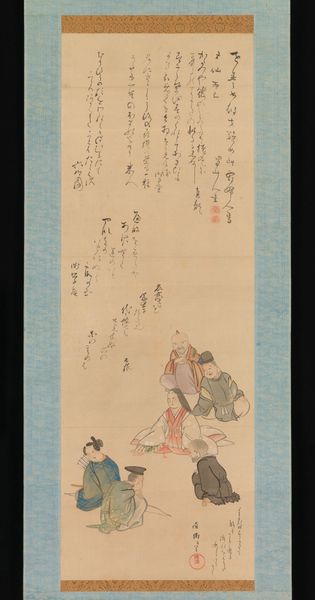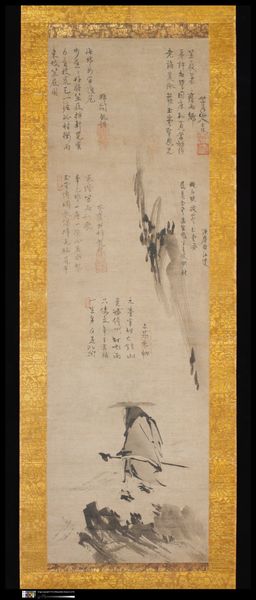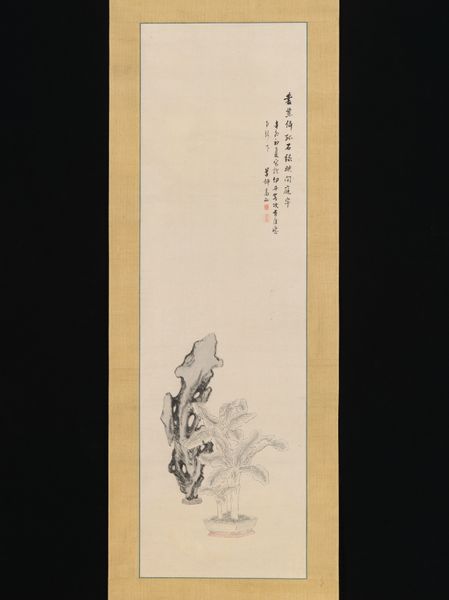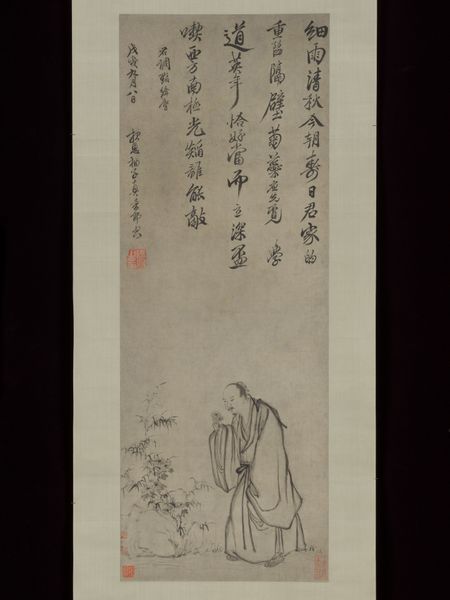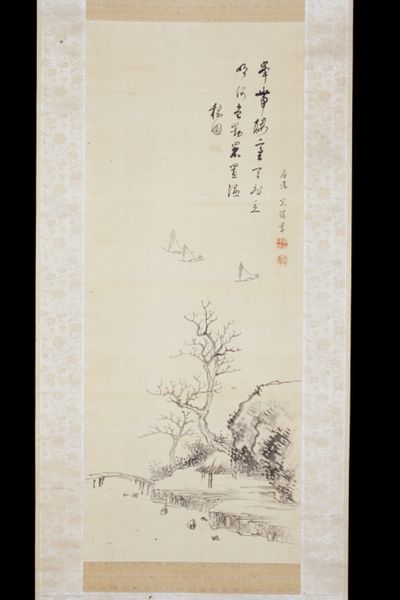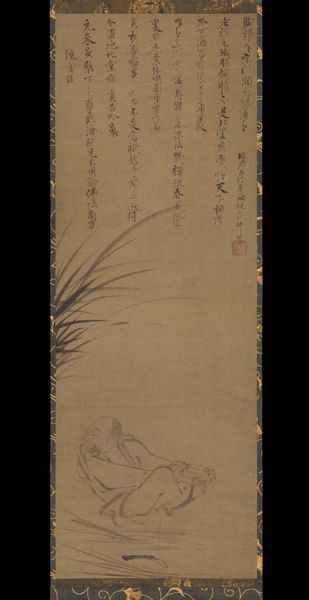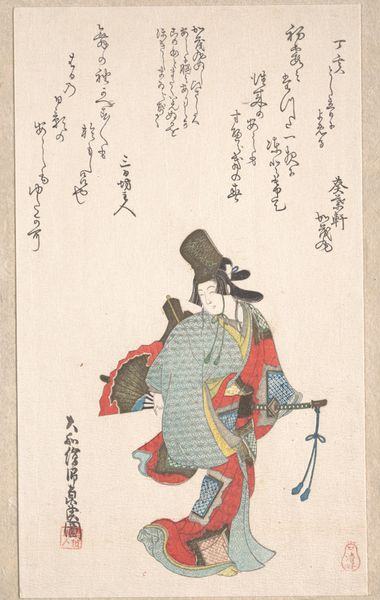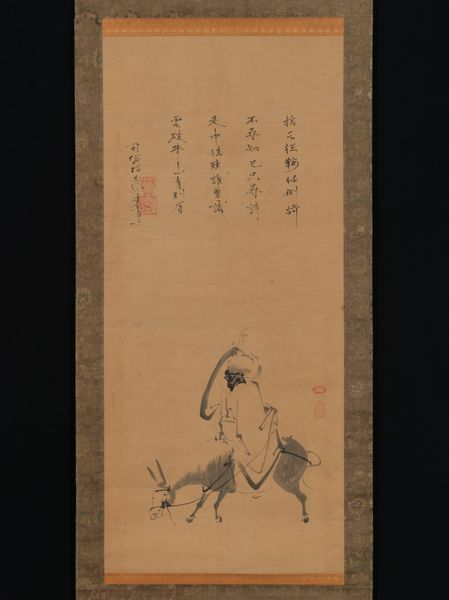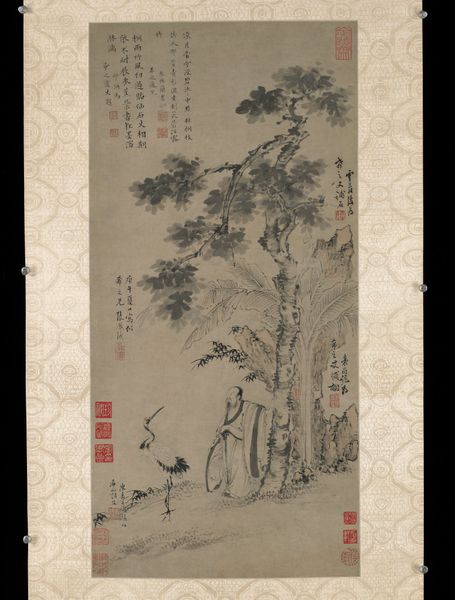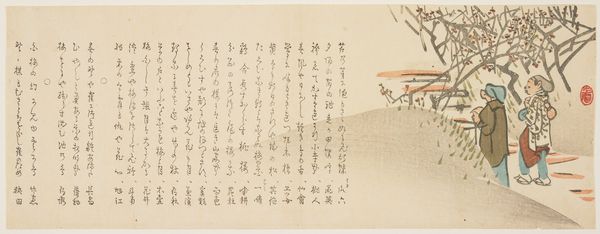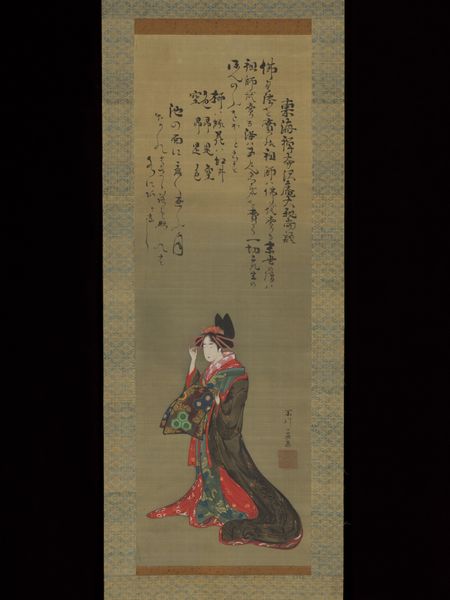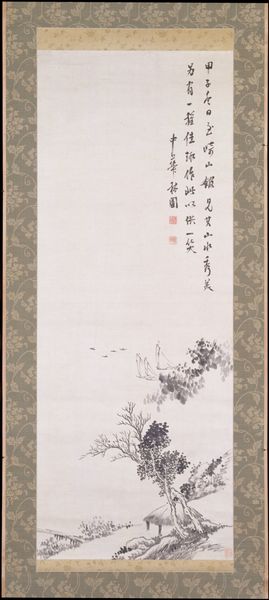
paper, hanging-scroll, ink
#
portrait
#
asian-art
#
landscape
#
folk art
#
paper
#
hanging-scroll
#
ink
#
tile art
#
yamato-e
#
calligraphy
Dimensions: 35 x 13 3/8 in. (88.9 x 33.97 cm)
Copyright: Public Domain
Kiyohara Yukinobu painted this image of Poetess Ono-no-Komachi, with ink and color on paper. Komachi, a woman of renowned beauty, is here depicted seated and dressed in lavish robes, with a mournful expression that reflects her later life of destitution. This melancholic pose, of a once-powerful figure now in decline, bears a striking resemblance to depictions of the fallen Roman emperors in Renaissance art. Consider the image of the defeated Emperor Nero, often shown with a similar despondent posture. The image is a symbol of moral decay, a once-great empire now vanquished, reappearing in various contexts throughout history. This idea continues to resurface, as collective memory and subconscious processes affect art production and interpretation. Yukinobu, in her portrayal of Komachi, taps into a universal sense of loss. Just as the image of Nero evokes thoughts of the transient nature of power, Komachi reminds us that beauty and status are fleeting. This resonates deeply, a subtle reminder of our shared human condition, as these symbols reappear, evolve, and take on new meanings across history.
Comments
minneapolisinstituteofart almost 2 years ago
⋮
Kiyohara Yukinobu was the daughter of Kusumi Morikage and the grandniece of Tan'yu_, both renowned painters of the Kano school. While Kano school artists specialized in Chinese style brushwork and subject matter, by the 17th century they were also trained in the delicate style associated with the Tosa school, whose artists focused on indigenous themes--especially portraits of Japan's "Immortal Poets." Here, Yukinobu depicts Ono-no-Komachi (834-80), one of the "Six Great Poets" of the ninth century who was also celebrated for her beauty. Using extremely fine brushwork, Yukinobu rendered Komachi in the multi-layered formal robes worn by Heian-period court women. The poem above is identified as one of Komachi's own verses: I wonder for whomthis blossoming golden lace waitson Matsuchi Mountain'He must have promisedto return in autumn.
Join the conversation
Join millions of artists and users on Artera today and experience the ultimate creative platform.
